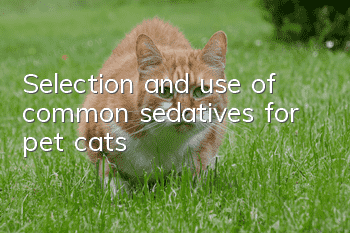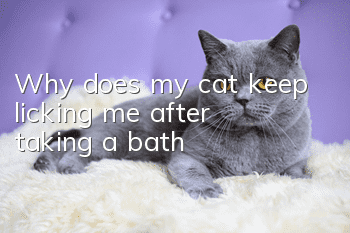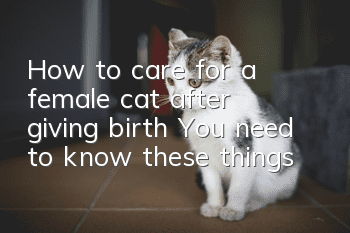Selection and use of common sedatives for pet cats

Some neurological symptoms in cats are mostly caused by diseases, and many infectious diseases will have corresponding neurological symptoms in the later stages. Of course, this is a manifestation of serious neurological symptoms. Sometimes cats are in estrus due to psychological depression, etc. Sudden mania may also occur. At this time, in order to avoid greater harm, the cat needs to be calmed.
In some ways, music has a relaxing effect on cats and can reduce their aggressive behavior. Therefore, you can play your music with soft background music, which can also soothe cats. If it is a lonely old cat, you might as well add a kitten to keep it company. Because it is easier for an old cat and a young person to accept each other, but it should be noted that the kitten has to be brought home by someone the old cat never knows. This person is there in the hope that the old cat will not associate you with the kitten and become jealous.
In addition, when a cat feels nervous, it will naturally attack its enemies with its claws, so you need to cut your cat's nails frequently. When cutting, it is best to have another person hold it and lead it away. attention.
Sedative choice
1. alpha2 adrenergic antagonist
Alpha2 antagonists are used to reverse the sedative and cardiovascular effects of alpha2 agonists. Currently, there are three antagonists: tolazoline, yohimbine, and atimazole. If relatively excessive amounts of antagonists are given, neurological (excitability and muscle tremors), cardiovascular (hypotension and tachycardia), and gastrointestinal (salivation and diarrhea) related side effects may occur. Deaths have also been reported with rapid IV administration. The mechanism may be a rapid reversal of vasoconstriction to the sympathetic nervous system without sufficient time to increase CO, causing severe hypotension.
2. Benzodiazepine sedatives
Most of the pharmacological effects of benzodiazepines are accomplished by regulating GABA-mediated nerve conduction. In the cell membrane of mammalian central neurons, GABA is the main inhibitory neurotransmitter. These receptors are also found outside the central nervous system in autonomic ganglia. In neurotransmission, two types of GABA receptors are involved: The GABAA receptor complex is a ligand-gated chloride channel with five glycoprotein subunits surrounding a central pore. The benzodiazepine binding site, which is also the binding site for other injectable anesthetics (barbiturates, propofol, etomidate), is located within the GABAA receptor complex. Benzodiazepines enhance the binding of GABA and GABAA receptors, increasing the frequency with which the channels open. However, barbiturates enhance intrinsic activity and increase the duration of channel openness. Both mechanisms increase chloride ion conduction and cell membrane hyperpolarization, reducing neuronal excitability. In the absence of GABA, benzodiazepinesThe drug has no intrinsic agonist activity and cannot alter chloride ion conduction.
This lack of intrinsic activity to inhibit the activity of the central nervous system (that is, it does not inhibit the excitability of the CNS) makes benzodiazepines have a wider safety range than barbiturates. There are three types of ligands that bind to benzodiazepine receptors: agonists, reverse agonists, and antagonists. Agonists bind to benzodiazepine receptors and produce sedative, anxiolytic, muscle relaxant, and antispasmodic effects in most animals. Reversal agonists bind to the same receptors and produce opposite effects. Antagonists have high affinity for benzodiazepine receptors and have little or no intrinsic activity.
Antagonists block or reverse the effects of agonists and reverse agonists and reverse agonists. Diazepam, midazolam, and zolazepam are all benzodiazepine agonists commonly used in veterinary clinical practice. Diazepam and midazolam are primarily used as sedatives, muscle relaxants, and antispasmodics. Zolazepam can be combined with a dissociative anesthetic (tiletamine) and is an approved anesthetic product in cats in the United States.
- How many months can a cat eat cat grass?
- Six special signs before your cat gives birth!
- When does a male cat go into heat?
- What does it look like if a cat gets frostbite?
- Can cats eat termites?
- Why does a cat vomit with blood streaks?
- Is it unhygienic for a cat to crawl into bed?
- Why does a cat urinate frequently?
- What should I do if the time for the second dose of cat triplex exceeds?
- Can cats eat blueberry gummies?



